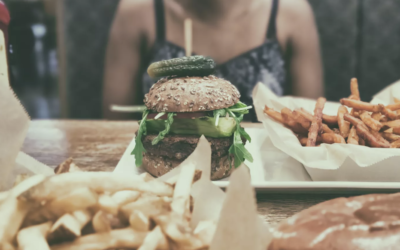This is a passion of mine and I am SO EXCITED to share it! My drive as a plastic surgeon is to help people, plain and simple. I love the look on my patients’ faces, at their post op visit, when they can truly enjoy their decision and feel their outside appearance is in alignment with their inner spirit. I am truly fulfilled.
The downside to surgery is discomfort…the dreaded PAIN that people spend a significant time worrying about before surgery and then dealing with afterwards. My traditional training taught me to hit people early on with a massive bottle of narcotics as well as an anti-anxiety medication. While narcotics, such as hydrocodone or oxycodone, work “so-so” to truly manage pain, they also have a tremendous downside with significant side-effects. The following are the 4 main reasons I dislike using narcotics for my patients:
1. Nausea and Vomiting: A large number of patients experience nausea and even vomiting (especially if taken on an empty stomach). Vomiting can lead to an increase in blood pressure which increases your risk for bleeding in the surgical site and, as a result, can potentially lead to additional surgery to drain the blood. In patients with breast implants this blood can set people up for more infections down the road or even capsular contracture.
2. Constipation: Narcotics slow down the peristaltic contractions of the gut leading to constipation. This, in turn, can cause abdominal bloating, pain, and even hospitalization if it is bad enough. Just like vomiting can lead to bleeding, straining on the toilet also can lead to increased blood pressure and thus bleeding into the surgical site.
3. Decreased breathing: Narcotics can suppress the respiratory system which is how people die from an overdose. Coupled with the anti-anxiety medication, which can cause sedation as well, this can be a deadly combination in someone still recovering from the effects of anesthesia. I cannot think of anything more devastating for their loved ones.
4. Inappropriate use: More often than not people get a very loopy feeling when take narcotics. If they don’t like this feeling then they quit taking them and stash them in a drawer. This places a nearly full bottle of a controlled substance just waiting to be found. I imagine a child finding them or a teenager selling them to their friends. As we are now in an opioid epidemic (especially in my county) I have to be mindful of how my actions as a prescriber contribute to the issue. Many studies have proven the link between narcotic prescriptions after surgery and narcotic dependence/abuse.
So now you know why I have searched for alternative methods of pain control, and once I decided to take the plunge fully, the results have been nothing short of miraculous! Below is my protocol and it works better than you can imagine!
- Herbal supplement protocol – Dr. Shirin Towfigh published this protocol and she has graciously shared it with me. It reduces inflammation which reduces swelling as well as nerve irritability.
- Non narcotic pain medication – I ask patients to buy an over-the-counter NSAID (Ibuprofen, Naproxen, etc), as well as acetaminophen (Tylenol). These are utilized as their primary pain medication without the above unwanted side effects. Some patients do not tolerate these (bariatric patients cannot take NSAIDs) however these cases are far less common compared to narcotic intolerance.
- Aggressive anti-nausea protocol – Since we know that nausea can lead to increased pain I focus on making sure all patients are covered ahead of time. I prescribe one medication you can have at home in case you need it. The second one is taken the morning of surgery to prevent nausea caused by anesthesia. Very few of my patients wake up with nausea!
- Nerve blocks at the time of surgery (regional anesthesia) – Right after the patient falls asleep the anesthesia provider administers nerve blocks to cover the surgical area. This can last for upwards of 8-12 hours and gradually wears off. This avoids the need to use narcotics during surgery which reduces all the associated side effects listed above. You also wake up much more comfortable from surgery. Bonus!
- ICE ICE BABY – We encourage lots of ice to reduce inflammation and swelling. This is so important!
- Meditation – I offer a healing meditation
I completely understand the fear of pain. I’ve certainly had patients almost walk straight out of the room when I tell them that they won’t receive narcotics like their friends did after their surgery. Maybe their Facebook group, or the blog they read, doesn’t talk about this and that is frightening; I understand. New things are always alarming and change can be difficult. Occasionally, I do have to prescribe a narcotic if patients already take them for chronic issues. I also give everyone my cell phone number so if they are really uncomfortable, I’m always available and happy to help them and provide pain management modifications. I never want anyone to suffer needlessly but the truth is most people don’t suffer… In fact, they are so much happier when narcotic-free. Happy patient=happy surgeon!
Remember if you have plans for surgery and are interested in this method, talk with your surgeon about anything you are thinking of doing. The best plan is what your surgeon is comfortable with so make sure they give clearance before starting any of the above strategies.
I’d love to hear your thoughts about this. Feel free to reply!




0 Comments